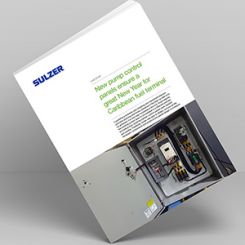The Al-Najaf Wastewater Treatment Plant is located in south Iraq, near the cities of Kufa and Najaf al-Asharaf. The plant's total design-build-operate project cost, including one year of operation before transferring the plant to the city, was less than $440 per cubic meter. The treatment plant handles 50,000 cubic meters of wastewater per day from the surrounding municipalities. The Al-Najaf plant features advanced returned biomass bio reactors (RBBRs). The technology extends the capabilities of the moving bed biofilm reactor and integrated fixed-film activated sludge (MBBR/IFAS) processes. The RBBRs consist of specialized biomass carriers moved by reactors, ensuring the attached growth of biomass. The plant meets optimal effluent parameters within a restricted footprint, reducing odor, sludge, clogging and maintenance. The overall wastewater treatment process is smarter, cleaner and greener than some treatment technologies.
High-Quality Effluent
The RBBR process copes with fluctuating loads and conditions while producing a consistently high-quality final effluent. "The startup after successful completion of the $22 million Al-Kufa Wastewater Treatment Plant Expansion and Renovation Project is addressing the improvement needs of the facility equipment, water-quality concerns and population growth projections," said Adnan Abed Khudyer Al-Zurfei, the governor of Al-Najaf. The plant's RBBR process and operation partnership with the installer assists the city in meeting regulatory requirements. The returned biomass performance and effluent quality positively contribute to the local environment. The Al-Kufa expansion's limited footprint included two aeration tanks with individual turbine silo sections, clarifiers, pumps and a fully automated chlorine disinfection system. Also included were the headworks with split channel bar screens, twin-channel grit and grease removal equipment, auto screen, conveyor, flow diversion channels and a separate upstream pump station to accept the gravity-feed delivery. The Al-Kufa expansion included two aeration basins, each with 2,300 12-inch fine-bubble disc diffusers. (Images courtesy of Turbo4Bio)
The Al-Kufa expansion included two aeration basins, each with 2,300 12-inch fine-bubble disc diffusers. (Images courtesy of Turbo4Bio) Several pumps serve the aeration basins and contribute to producing high-quality, low-odor effluent.
Several pumps serve the aeration basins and contribute to producing high-quality, low-odor effluent.MBBR/IFAS
The RBBR process improves the MBBR/IFAS system by continuously recycling biomass with turbines. The full growth process produces minimal sludge and odor. Standard MBBR consists of a flow-through or one-pass system that still results in continuous sludge and odor. At the An-Kufa station, the sludge drying beds still remained empty after 100 days of operation. In the RBBR process, turbines continously recylce biomass through a combination of aeration and pumping technologies.
In the RBBR process, turbines continously recylce biomass through a combination of aeration and pumping technologies.
